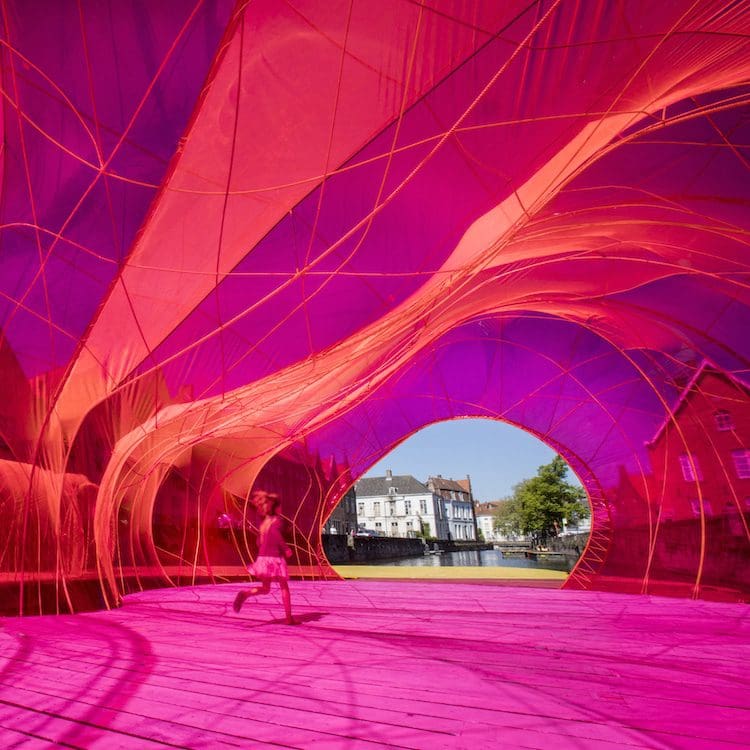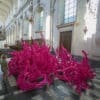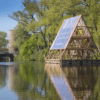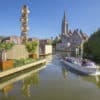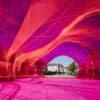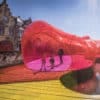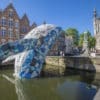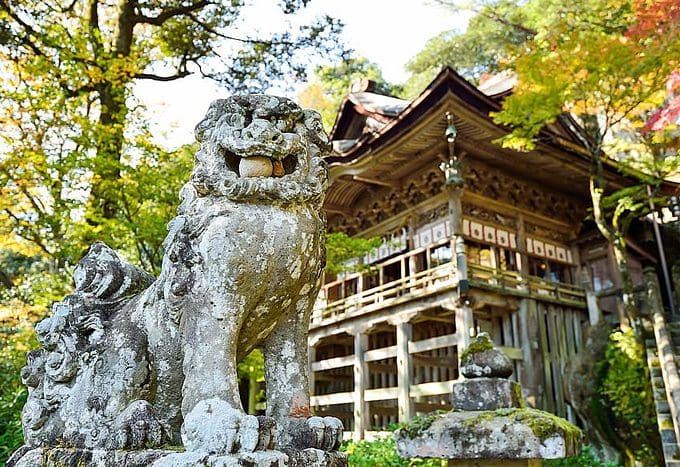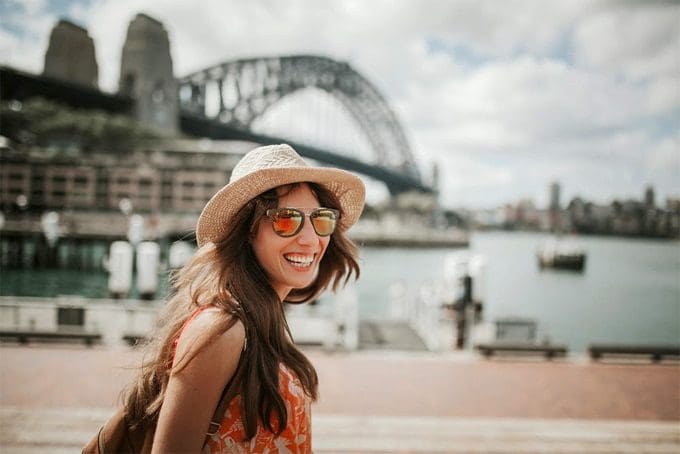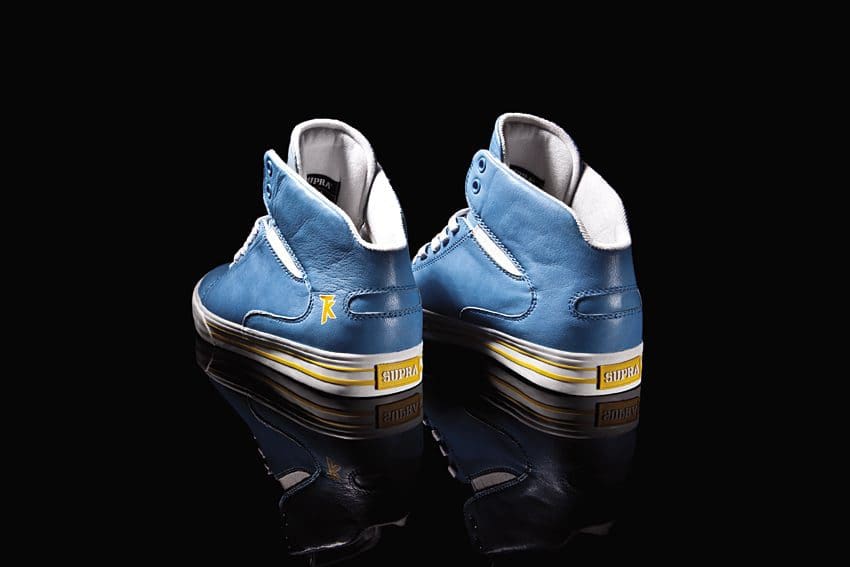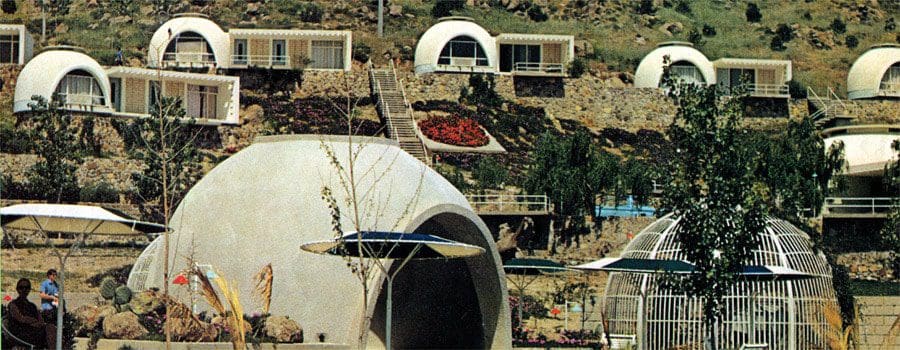Words: Chris Zacharia
‘If we had tried to do this a few years ago’ jokes Till-Holger Bolchert. ‘the answer wouldn’t have just been ‘no’. You would’ve been exiled’
Bruges’ Triennial has not come easy. First founded in the 1970s, this artistic takeover of Bruges’ historic city-centre fell victim to political squabbles a decade later.
‘After that, the art scene collapsed here. Everything went to Brussels’ explains Michel Dewilde, a curator.
But since 2012, the Triennial has returned, and is now reshaping Bruges for a second time.
- (c) VisitBruges | Jan D’hondt
- (c) VisitBruges | Jan D’hondt
- (c) VisitBruges | Jan D’hondt
- (c) VisitBruges | Jan D’hondt
- (c) VisitBruges | Jan D’hondt
- (c) VisitBruges | Jan D’hondt
‘It’s not just about attracting tourists’ says Till. ‘It’s about giving something back to the local community, to give them something which genuinely helps them’.
Bruges, a picturesque European port, feels like a work of art in and of itself. A UNESCO world heritage site, the locals’ conservative attitude toward the city centre makes change difficult. Restarting the Triennial took a great deal of work.
Yet the results have been worth the effort. The installations add a new dimension to Bruges, bring surprise and pizzazz to the city’s orderly centre. It all makes the Triennial a great time to visit Flanders.
Strolling around the canals and byways on the eve of the festival, I watch as last-minute adjustments are made to the structures. Featuring concepts from artists, architects and collectives from all over the world, some of which reach thirty feet tall, installing these works of art is a challenge to say the least. A twenty-foot whale from New York’s StudioKCA requires two cranes, iron pedestals and a team of divers – and an assorted crowd of onlookers, filming the process on their smartphones
This year’s theme is ‘Liquid Architecture’. From ruminations on the changing shape of cities to the impact of climate change, the concept has been interpreted in a wide number of ways.
In the south of Bruges, on the Coupure canal, we’re drawn to a twisting red bubble floating on the water. The Selgascano Pavilion, designed by the Spanish architecture firm of the same name, is first and foremost a meeting place. Large enough to host dozens of people, the structure allows you to step onto the water and view the city through a red film. Adjacent decking encourages locals to take a dip, but it’s still 9am and I haven’t yet had a coffee. Besides, the view from within the dome is entrancing: the city of Bruges in brilliant red, a daydream within a fantasy. As I step outside, it takes my eyes a moment to readjust to reality – for a moment everything appears green.
Like the Selgascano Pavilion, many of the structures are designed to be interactive. House of Time is the most prominent. Taking advantage of dockside dereliction, this outdoor yard has been designed by German collective Raumlabor to help disadvantaged young people. Everything, from the bike tyre-covered bar roof to the treehouse, is made from reclaimed materials, pieced together by volunteers. Drinks, live music, and the chance to co-create the space will help to build a community of young people here, at least until the Triennial ends in September. And after that?
‘Well, that depends’ our guide Marc replies. ‘If the youth make use of this space, and want to keep it, then it will stay’
Another community project is found near the Minnerwaterpark. As you turn the corner from Bargeplein canal, your eyes adjust to the sight of a three-story wooden house, complete with a slanting triangular roof, floating idly on the river as though it were a water lily.
‘Welcome to the floating school’ Marc announces. Conceived by Nigerian artist Kunlé Adeyemi, the floating school is a response to two challenges: the need to bring education to children in remote areas, where funding is limited, and as a response to climate change.
Crossing a wooden bridge, we enter the school. Volunteer carpenters pay us no mind, carrying stacks of wood and the first items of furniture. On the first floor are two tables with glass tops.
‘Three schools are participating’ says Marc. The children will be challenged to build a project, which will they’ll be exhibiting in these cabinets’
From the third floor, we gaze across the water to the cobbled bridge, dappled in the morning sunlight. It might be a temporary school, but it’s certainly much nicer than my old classroom.
Wending our way about the city, artworks pop out at us like notable guests at a party. In the carefully manicured world of Bruges, where everything has its correct place and where even little weeds are expunged by means of a street-sweeping laser-beam, the impact of each artwork is intensified.
But the artworks don’t just juxtapose the city, they actively comment upon it. One floating pavilion by Wesley Meuris is intended as a gesture of welcome to immigrants; the structure invites anyone to climb aboard and soak up the sun. In this context, its location at the heart of Bruges imperial power, surrounded by the palaces, courts of justice and the vast Belfort of Market Square, is not incidental.
‘It’s actually on the site of an older floating pavilion, designed by a Japanese artist’ says Marc. ‘And before that, there was a church here. After the church was destroyed, the land lay empty until 2002, when a controversial floating structure was placed upon it. But unfortunately the structure was…destroyed’
So what happened? Did a disgruntled mayor tear it down? Was it sabotaged?
‘No…one night, thinking it was a parking space, a truck driver accidentally reversed into it’
Fortunately, after its unfortunate demise the structure has been reprised for the Triennial. We watch for a few moments as a team of builders scurries to finish the structure.
Not all of the artists have situated their ‘Liquid Cities’ on the water. Approaching an imposing Grootseminerie, a former seminary for budding priests, we slip in through the backdoor and enter the vast nave. Within are all the trappings you’d expect inside a place of worship, from Madonna-with-child frescoes to a titanic organ. But there are also two more. From the pulpit flows an iridescent pink wave, frozen in the illusion of movement.
Meanwhile, towards the back of a church is a tangle of oboes. On closer inspection, they’re revealed to be a cluster of wormholes, sitting incongruously on the red carpet of the church. They’re designed by FRAC centre, from France’s Val de Loire, aiming to submerge the rigidity of the right-angle in fluidity.
Again, the contrast is powerful: a shock of contemporary colour against the austere worship of the church. I mention this clever placement to Michel, the mop-haired curator of the Triennial.
‘It’s not about the city’ he insists. ‘Like all good art, it should succeed in its own right’
Bruges Triennial will run until 16th September 2018
Plan your trip to Bruges this summer with Visit Flanders

